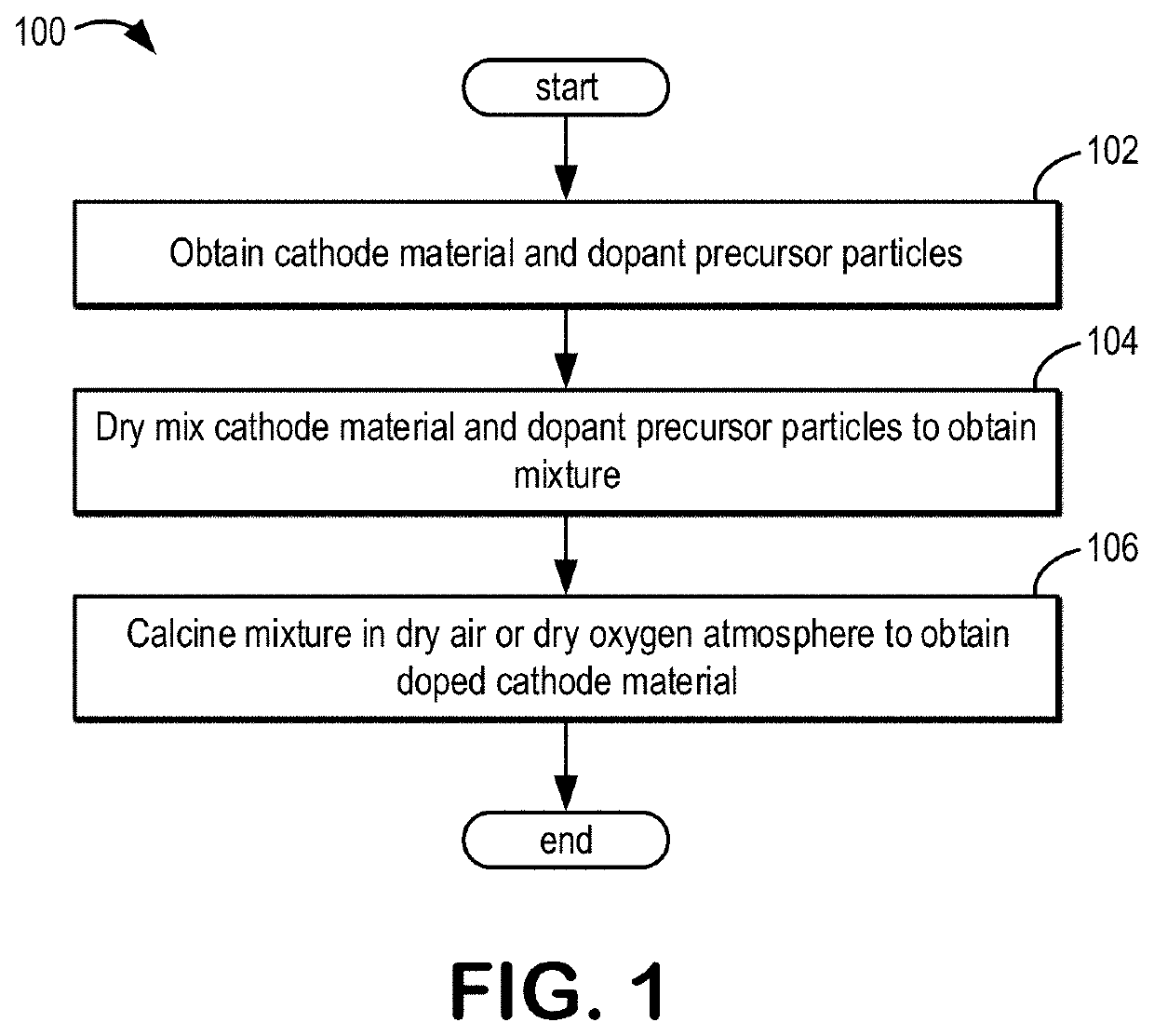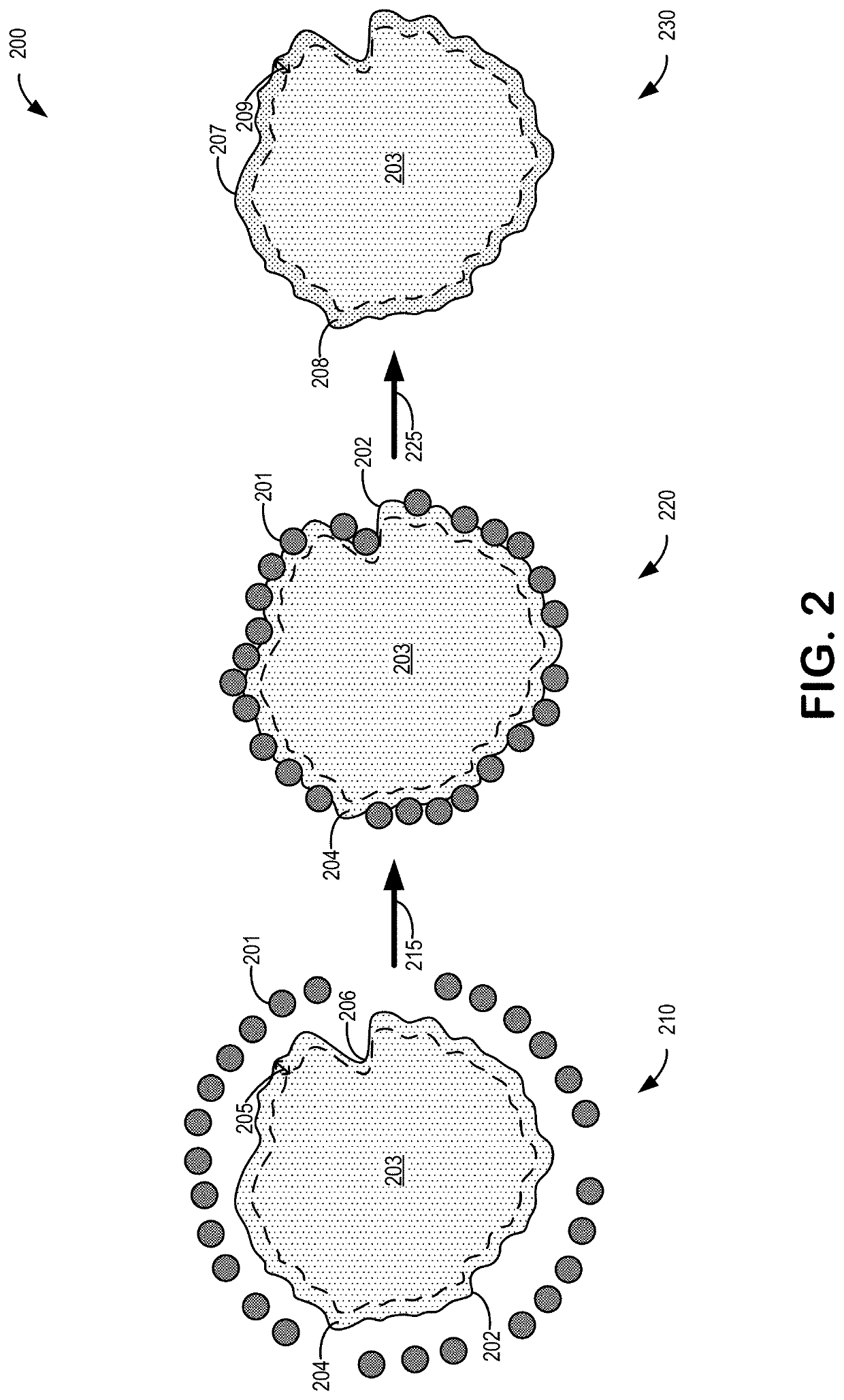Methods and systems for dry surface doping of cathode materials
- Summary
- Abstract
- Description
- Claims
- Application Information
AI Technical Summary
Benefits of technology
Problems solved by technology
Method used
Image
Examples
Embodiment Construction
[0027]The following description relates to systems and methods for dry surface doping a cathode material with a dopant, such as a metal dopant. The cathode material may be a lithiated compound, such as a lithium nickel manganese cobalt oxide (NMC), a lithium nickel cobalt aluminum oxide (NCA), a lithium-rich metal oxide, a lithium manganese oxide (LMO), a lithium nickel manganese oxide (LNMO), a lithium iron phosphate (LFP), or a combination thereof. In some examples, the dry surface doping may be applied to an anode material, such as lithium titanate oxide (LTO). The metal dopant may be a metal ion having an ionic radius greater than about 0.50 Å, such as neodymium (Nd). As used herein, “about” when referring to a numerical value may encompass a deviation of 5% or less.
[0028]In some examples, a volume of the cathode material may be partitioned into a core, or core region, and a surface, or surface region. As such, the dry surface doping may include doping the metal dopant into the ...
PUM
 Login to View More
Login to View More Abstract
Description
Claims
Application Information
 Login to View More
Login to View More - R&D
- Intellectual Property
- Life Sciences
- Materials
- Tech Scout
- Unparalleled Data Quality
- Higher Quality Content
- 60% Fewer Hallucinations
Browse by: Latest US Patents, China's latest patents, Technical Efficacy Thesaurus, Application Domain, Technology Topic, Popular Technical Reports.
© 2025 PatSnap. All rights reserved.Legal|Privacy policy|Modern Slavery Act Transparency Statement|Sitemap|About US| Contact US: help@patsnap.com



